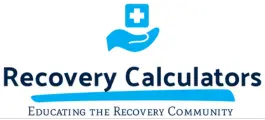Opioids are a class of drugs effective in managing moderate to severe pain. However, their potent pain-relieving properties come with a significant risk of dependence and addiction. Misusing these drugs can also lead to opioid overdose and can be fatal.
When someone who has become dependent on opioids abruptly stops using them, they experience a cascade of physical and psychological symptoms known as opioid withdrawal. Opioid withdrawal can be an uncomfortable and sometimes exhausting experience for individuals. This makes it crucial to have tools for accurately measuring its severity.
Questions answered in this article:
Our Opioid Addiction Treatment Centers

Scottsdale Rehab
Luxury Personalized Rehab

HART Rehab
Holistic Luxury Personalized Rehab

Scottsdale Detox
Luxury Medical Detox
Understanding Opioid Withdrawal
Opioid withdrawal occurs when someone who has developed a physical dependence on opioids abruptly reduces or stops their use. This can result in a range of physical and psychological symptoms, making the withdrawal process extremely challenging.
Common symptoms of opioid withdrawal can include anxiety, depression, muscle aches, insomnia, runny nose, nausea, increased heart rate, and intense drug cravings. The timeline varies for every person experiencing opioid withdrawal. Early symptoms typically begin within 6 to 12 hours for short-acting opioids. Meanwhile, symptoms manifest within 30 hours for longer-acting opioids.
Symptoms peak within 72 hours and people may experience intense withdrawal during this period. Acute symptoms typically improve within a week, but some individuals may experience prolonged symptoms. This is known as post-acute withdrawal syndrome (PAWS), which can last for weeks or months.
Clinical Opiate Withdrawal Scale Overview
The Clinical Opiate Withdrawal Scale (COWS) is a clinician-administered tool designed to standardize the assessment of opioid withdrawal. It’s a simple yet effective 11-point scale used in both inpatient and outpatient settings to objectively measure the presence and severity of common withdrawal symptoms.
The COWS withdrawal scale allows healthcare professionals to determine the current stage of withdrawal and monitor its progress over time. This is crucial for making informed decisions, including medication adjustments and implementation of support strategies.
What Does COWS Stand For?
COWS stands for the Clinical Opiate Withdrawal Scale. It is a clinician-administered tool that evaluates 11 common withdrawal symptoms. Each symptom is scored based on severity, and the total score helps determine the overall severity of withdrawal, guiding treatment decisions.
Components of The COWS Protocol
COWS consists of 11 items, each assessing different symptoms associated with opioid withdrawal. Each item is scored on a scale from 0 to 4 or 5, depending on the symptom. Here’s a breakdown of the assessed symptoms:
- Resting Pulse Rate
- Sweating
- Restlessness
- Pupil Size
- Bone or Joint Aches
- Runny Nose or Tearing
- GI Upset
- Tremor
- Yawning
- Anxiety or Irritability
- Gooseflesh Skin
How To Interpret COWS Score?
Interpreting the COWS score involves summing the individual scores for each of the 11 items. The total score falls into one of several categories, indicating the severity of withdrawal:- 0-4: No withdrawal
- 5-12: Mild withdrawal
- 13-24: Moderate withdrawal
- 25-36: Moderately severe withdrawal
- 37+: Severe withdrawal
Limitations of the COWS Scale
While the COWS is a valuable tool for withdrawal assessment, it does have some limitations:
- Subjectivity in Reporting: Some symptoms rely on patient self-reporting, which can be influenced by individual pain tolerance and honesty.
- Variability in Observation: Clinician observation can vary, potentially affecting scores for symptoms like restlessness or pupil size.
- Acute Focus: Primarily assesses acute withdrawal symptoms and may not capture longer-term withdrawal issues.
- Training Required: Effective use of the COWS requires training and experience, which may not be available in all settings.
- Resource Intensive: Using the scale takes time and resources, which might be challenging in high-volume or resource-limited environments.
Managing Opioid Withdrawal
Opioid withdrawal, while uncomfortable, is not life-threatening. However, its intensity can vary greatly, and effective management strategies are crucial to ensure patient comfort and successful recovery.
Some common approaches to managing withdrawal from opioids may include:
- Medication-Assisted Treatment (MAT): This evidence-based approach utilizes medications like methadone, buprenorphine, and naltrexone to ease withdrawal symptoms, reduce cravings, and prevent relapse.
- Behavioral therapy: Techniques like cognitive-behavioral therapy (CBT) can equip individuals with coping mechanisms to manage cravings and prevent relapse.
- Support groups: Connecting with others in recovery through support groups like Narcotics Anonymous (NA) can provide invaluable encouragement and shared experiences.
- Holistic approaches: Techniques like yoga, meditation, and acupuncture may help manage stress and improve overall well-being during withdrawal.
The most effective approach is a personalized treatment for opioid withdrawal that considers the severity of symptoms, medical history, and overall support system.
Remember, overcoming opioid dependence is a journey, and help is available every step of the way. Don’t hesitate to reach out for support and utilize tools like the COWS to guide your recovery process.


